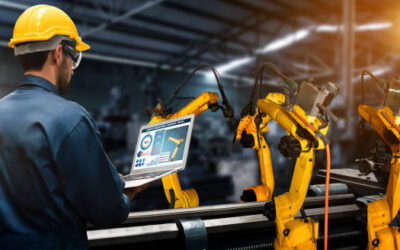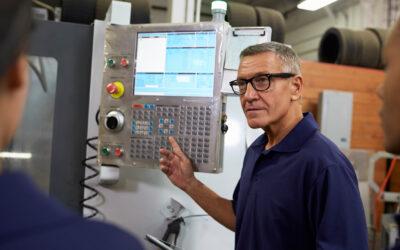Imagine, for a moment, that you need a new computer. You reach out to vendors with a request for proposal (RFP) that states, “I need a new computer.” As the bids come in, you begin to realize that none of the vendors know what you meant. One proposes a low-cost, low-powered laptop, while another proposes a state-of-the-art high-performance gaming PC. Others try to take a middle-of-the-road approach that balances performance with cost, while still others suggest that you don’t need a computer at all and should opt for a tablet instead.
Without additional details about your budget, how you’ll use the computer, the features you need, and the reason for purchasing, vendors simply do not have enough information to offer the right solution. In the end, you get several proposals, but none that deliver on what you actually need.
Now swap out a new computer for a major investment in automation technology, and you can see how this can be a big challenge for manufacturers.
Driven by the desire for cost certainty, clear schedules, and defined deliverables, manufacturers have tended to define project requirements upfront, put out an RFP, compare competing bids, and select a winning vendor.
As with purchasing a laptop, however, this approach opens the manufacturer to increased risk. Both the manufacturer and the bidding automation firms lack clarity around the real requirements, and, as a result, the automation vendors get to dictate the strategy based on the solutions they already happen to have.
So, what can manufacturers do to ensure their investments in automation technology drive their business forward? It all starts with taking a design-first approach to automation technology.
Industry 4.0 and the need for automation technology
Referring to the fourth revolution in manufacturing, Industry 4.0 technologies focus on automation, interconnectivity, and data and analytics to drive efficiency, productivity, flexibility, speed, and quality throughout the value chain.
The global industrial automation market is projected to grow from US$250.86 billion in 2022 to more than $350 billion in 2029. As technology redefines the way that goods are produced, Canadian manufacturers must continue to invest in their facilities to remain competitive.
Unfortunately, many small and medium firms have been slow to embrace these trends. A recent survey found that 60 percent did not use advanced manufacturing technologies. And many companies that have tried to innovate have not seen the results they were promised, leaving them understandably hesitant to invest again.
Implementing a design-first approach to innovation
Innovation is not linear, and building something new necessarily means continuously testing, learning, and improving the design as issues come up and new ideas are incorporated. And because an additional technology can affect the entire production environment, manufacturers cannot look at equipment or processes in isolation.
That’s where a design-first approach to automation technology comes in. Instead of skipping straight to the RFP, manufacturers can allocate time, budget, and resources to the planning phases of the project. By taking an iterative, incremental approach to design that more closely aligns with the innovation process, manufacturers can develop accurate specifications, requirements, budgets, schedules, and objectives before putting the project out for competitive bidding.
Developing an Automation Strategy
Putting design first is a key step in developing an Automation Strategy that takes a holistic view of the entire organization. The Automation Strategy acts as the missing link that ties together the business strategy, the manufacturing strategy, and the technology. It serves as the why behind the what, providing a unified vision that can be applied throughout the company, not just on a one-off project.
Put simply, a process-driven approach to design moves the manufacturer from a loosely defined strategic objective – “I need a new computer” – to a fully developed solution that meets the needs of the business.
The role of the Automation Strategist
Given the importance of the Automation Strategy, it’s vital that manufacturers have someone on the team who oversees its development and implementation.
An Automation Strategist is a senior executive – either internal to the organization or engaged as a trusted partner – who brings a wealth of experience in manufacturing strategy, automation, and technology. Their role is to identify opportunities for improvement, understand the latest technologies, and function as a bridge between senior executives, the manufacturing team, and the automation design team.
Most of all, they take a holistic approach to automation and ensure that all parts of the business are working together toward a common goal under a shared design philosophy.
Making things better with the right automation technology
Technology, on its own, is not enough to create a lasting competitive advantage. So many automation projects fail to live up to expectations because they are done in a vacuum without a wider understanding of how they fit into the overall production environment. Without a measurable return on these initial attempts, manufacturers risk delaying investments in other areas and falling behind to those that are continuously innovating their facilities.
A bit of upfront time, budget, and resources can mitigate these risks and increase the likelihood of a successful project. By taking a design-first approach, developing a holistic Automation Strategy, and working with a trusted Automation Strategist, manufacturers can implement the right technologies across the entire organization and position themselves for long-term success.
To learn more about a design-first approach to automation, the importance of an Automation Strategy, and the role of an Automation Strategist working with a dedicated Design Team, download our recent manufacturing white papers.



